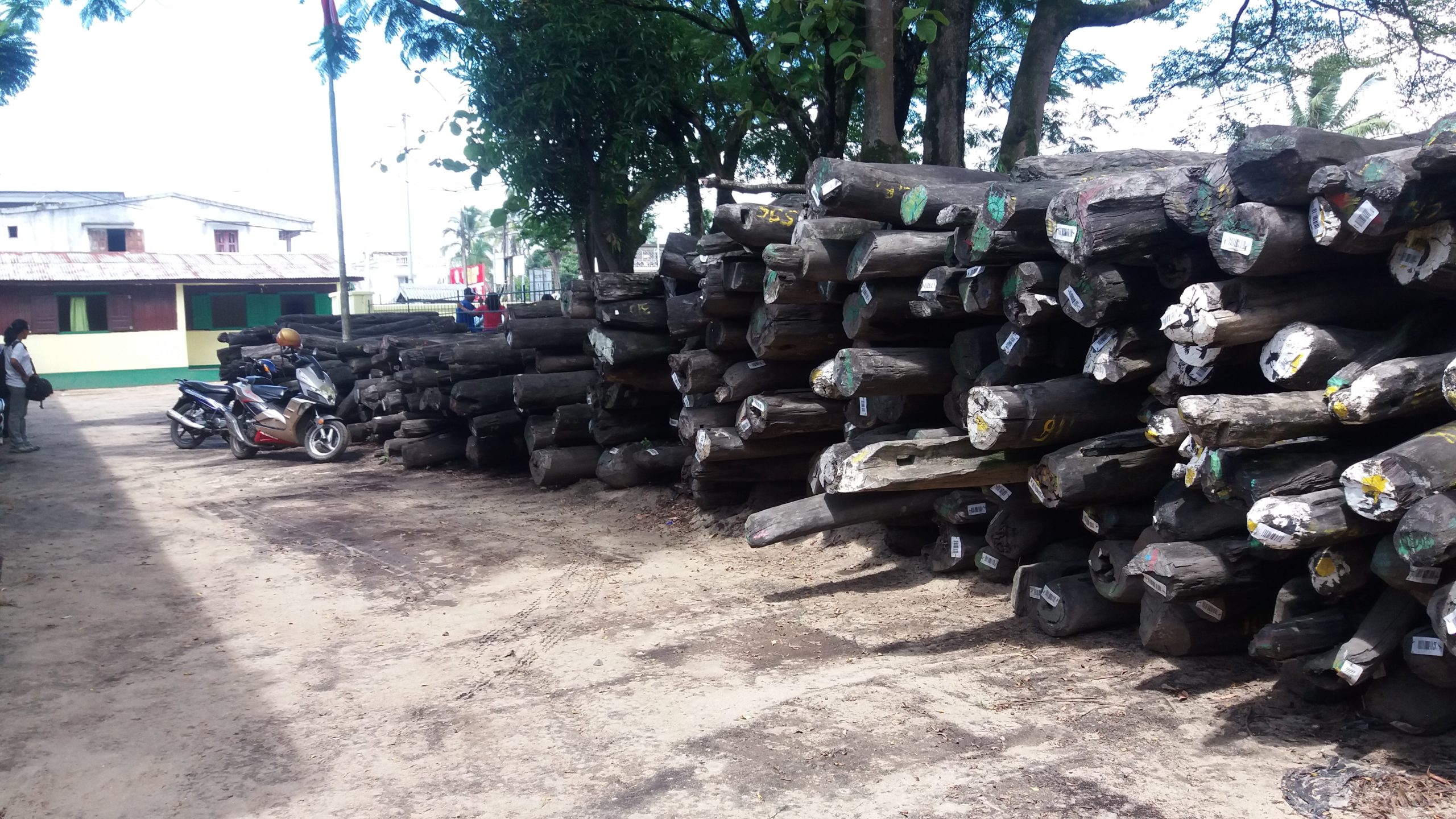BGCI publish The Red List of Timber Trees
-
Region
Global -
Programme
Global Tree Assessment -
Workstream
Sharing Knowledge and Resources -
Topic
Tree Conservation -
Type
News -
Source
BGCI
News published: 12 October 2023
BGCI publish The Red List of Timber Trees, presenting the conservation status of nearly 5,000 of the world’s timber species.
Timber is the most common and economically important use of tree species around the world, supporting the livelihoods of many people. And yet, until now there has not been a comprehensive study of the extinction risk to the world’s timber species, which has limited conservation prioritisation efforts. The Red List of Timber Trees, a report published today by BGCI, provides the first comprehensive global overview of the conservation status of the world’s tree species that are utilised for timber.
The report compiles information from 4,945 tree species assessed on the IUCN Red List and used for timber. It finds that a third of these tree species (1,664) are threatened with extinction. The timber use, such as logging and wood harvesting, is identified as the most common threat to these timber trees affecting 59% of species. Other major threats include agricultural expansion, urbanisation, changes in fire regime, mining, climate change, and invasive species.
The report also contains a conservation gap analysis, and shows a conservation gap for many timber species. The ex situ survey found that 46% of timber species are not held within an ex situ collection (such as in a seed bank, botanic garden, arboretum etc.). Out of the 1,664 threatened species, 64% are not found in ex situ collections. With 2,219 species (45%) experiencing significant population decline, there is a need for greater conservation action for timber trees.
The report provides, recommendations for conservation action needed by different stakeholders including expansion and support of sustainable use and forest management. The report also highlighted several data gaps (more information in FAQ below) in the availability of timber tree data for conservation, other recommendations therefore suggest ways to counter this for example developing methods to collect data at a species level. Case studies in the report, showcase the vital conservation efforts that are being carried out across the world to save timber species by BGCI members. We hope that The Red List of Timber Trees will stimulate further conservation action for this important group of species.
This report is an outcome of ‘The Barometer of Life: Global Timbers Species’, along with the Global Tree Assessment which has accelerated the production of IUCN Red List assessments for tree species including those used for timber. Funding for this project was provided by the IUCN – Toyota Red List Partnership and by Fondation Franklinia.
Contact – megan.barstow@bgci.org
FAQ’s
What data was used for assessments?
Species were assessed using a variety of data sources. These include herbarium records, geographic range estimates, information on localities and population size. For species experiencing population decline in the wild the major data source was habitat loss information, often gathered from Global Forest Watch. For species where it was available (and applicable) trade data was used, this included information from literatures such as PROTA and PROSEA databases or if a species was listed in CITES – information from listing documents, Non-Detriment Findings (NDFs) and CITES trade database.
What is the data gap?
Despite the varied data types used for timber tree red list assessments, there was a significant paucity of information on the scale of use and trade. This was for a number of reasons:
- A lack of high quality data comprehensively gathered and available across the complete range of the species
- A lack of population level information (e.g. regeneration, number of trees).
- A lack of access to trade information (data not being publicly available)
- A lack of species specific data, with the majority of available data being gathered at a ‘genus’ level or using a trade name for a group of different species
- A lack of biological units being used to gather data for timber trees and product
What does The Red List of Timber Trees mean for the timber industry?
The publication of The Red List of Timber Trees seeks to guide conservation actions for timber trees, raise awareness of timber tree species experiencing population decline (not only for timber use), and mobilise different sectors (including the timber industry) to take action to protect threatened timber tree species. There is not a need to stop timber harvest and trade, as this is a source of income for many, and timber is relied upon to make many essential products. There is, however, a need to increase sustainability across the timber industry, and there should be increased research into sustainable use and management of timber trees at the species, as well as forestry levels.
What can consumers do?
Timber is a wildlife product, and there needs to be increased consideration of this when buying products made from timber. Certain standards for timber products such as the Forest Stewardship Council (FSC) and Programme for the Endorsement of Forest Certification (PEFC) can be identified on wooden products, and these confirm sustainability. Consumers should think about buying second hand timber products to reduce demand. They can also ask for increased accountability of companies manufacturing, buying and selling timber products to provide more information on the sources of the forest, forest management and sustainability.

Support BGCI
You can support our plant conservation efforts by sponsoring membership for small botanic gardens, contributing to the Global Botanic Garden Fund, and more!
Become a Member
Be part of the largest network of botanic gardens and plant conservation experts in the world by joining BGCI today!